Properties of Cement-Based Composites Modified with Magnetite Nanoparticles: A Review
Abstract
:1. Introduction
2. Methods of Synthesizing Magnetic Nanostructures
3. Processing of MN-Engineered Cementitious Composites
4. Properties of Cement Composites Containing Nano-Fe3O4
4.1. Hydration Process
4.2. Workability of Composites
4.3. Structure of Cement-Based Composites Modified with MN
- (1)
- porous phase of low stiffness: a modulus below 10 GPa
- (2)
- LD C–S–H phase of low stiffness: 20 ± 5 GPa
- (3)
- HD C–S–H phase of high stiffness: 30 ± 5 GPa
- (4)
- CH/C–S–H phase: 40 ± 5 GPa
4.4. Mechanical Properties
4.4.1. Compressive Strength
4.4.2. Flexural/Tensile Strength
4.5. Functional Properties
4.5.1. Electromagnetic Wave Absorption
4.5.2. Gamma-Ray Shielding
4.5.3. Thermal Resistance of Cementitious Composites
5. Concluding Remarks and Research Needs
- (1)
- For nano-Fe3O4 used in cement composites for the modification of the structure and mechanical properties, the obtained results were similar to those recorded for the TiO2 and SiO2 nanoparticles or other nanomaterials, such as Fe2O3, Al2O3, GO, carbon nanotubes, and nanoclay. The use of MN in cement composites leads an increase in the compressive strength. However, an influence of MN on the flexural strength was not observed. MN does not show any noticeable chemical activity, and its positive impact on the mechanical properties and durability is mainly the result of the nucleation effect as well as improvement in the microstructure caused by a nanofilling effect.
- (2)
- The obvious advantage of nano-Fe3O4 compared with other nanomaterials used for modification of the cement composites is that this addition does not worsen the workability of the composites (if its content does not exceed 10% of the binder mass). This is related to the nonporous morphology and more hydrophobic characteristics of the nanomagnetite compared to other nanomaterials, such as SiO2 or TiO2.
- (3)
- Among the properties of the cement composites modified with MN, the particularly interesting property is the increased electromagnetic waves absorption ability and improvement in the shielding ability of the composites against gamma radiation. The tests of the attenuation of gamma rays demonstrated that the addition of nano-Fe3O4 improved the shielding ability of cement pastes and mortars in a range of energy allowing for their use in the future for shields in nuclear and medical objects exposed to ionizing radiation.
- (4)
- The drawback of nano-Fe3O4 is the poor thermal stability of the nanoparticles. The improvement of this feature was achieved by the use of a nano-SiO2 shell. The use of core-shell-type nanostructues produced better mechanical properties in the cement composites within the temperature range of 200–600 °C. The noticeable limitation is the cracking of the heated composite specimens. The cement composites modified with nano-Fe3O4/SiO2 have demonstrated better shielding ability against gamma radiation at temperatures up to 450 °C compared to unmodified concretes. In the future, nano-Fe3O4/SiO2 could be used in cement-based repair materials for the injection of concrete covers in nuclear power plants.
- (5)
- The main problem is, as with other nanomaterials, the efficient manufacturing of cement composites containing MN. The agglomeration, characteristic for nanoparticles in cement composites, increases with the addition MN due to its magnetite properties. As shown in the studies (which are still few), the effective dispersion of MN in cement composites occurs not only with sonication during the mechanical mixing of the components, but also in the coating of Fe3O4 nanoparticles with a nanosilica shell. The performance of the cement composite modified with MN is sensitive to dosage and dispersion of the nanomodifier, as well as the composition of the composite. Thus, it is important to develop an effective method for applying MN nanostructures into the composite, which should enable the production of such a composite not only in the laboratory but also in the real world.
Funding
Conflicts of Interest
References
- Neville, A.V. Properties of Concrete, 5th ed.; Person Education Limited: Edinburg, UK, 2011; pp. 271–313. [Google Scholar]
- Larrard, F.D. Concrete Mixture Proportioning: A Scientific Approach; CRC Press: London, UK, 1999; pp. 177–221. [Google Scholar]
- Kurdowski, W. Cement and Concrete Chemistry; Springer: New York, NY, USA, 2014; pp. 279–368. [Google Scholar]
- Lawrence, P.; Cyr, M.; Ringot, E. Mineral admixtures in mortars: Effect of inert materials on short-term hydration. Cem. Concr. Res. 2003, 33, 1939–1947. [Google Scholar] [CrossRef]
- D’Alessandro, A.; Ubertini, F.; Laflamme, S.; Materazzi, A.L. Towards smart concrete for smart cities: Recent results and future application of strain-sensing nanocomposites. J. Smart Cities 2015, 1, 3–14. [Google Scholar] [CrossRef]
- Zelić, J.; Rušić, D.; Veza, D.; Krstulović, R. The role of silica fume in the kinetics and mechanisms during the early stage of cement hydration. Cem. Concr. Res. 2000, 30, 1655–1662. [Google Scholar] [CrossRef]
- Lee, J.; Mahendra, S.; Alvarez, P.J.J. Nanomaterials in the construction industry: A review of their applications and environmental health and safety considerations. ACS Nano 2010, 4, 3580–3590. [Google Scholar] [CrossRef] [PubMed]
- van Broekhuizen, P.; van Broekhuizen, F.; Cornelissen, R.; Reijnders, L. Use of nanomaterials in the European construction industry and some occupational health aspects thereof. J. Nanopart Res. 2011, 13, 1–18. [Google Scholar] [CrossRef]
- Hincapié, I.; Caballero, A.; Hiltbrunner, G.D.; Nowack, B. Use of engineered nanomaterials in the construction industry with specific emphasis on paints and their flows in construction and demolition waste in Switzerland. Waste Manag. 2015, 43, 398–406. [Google Scholar] [CrossRef]
- Hanus, M.J.; Harris, A.T. Nanotechnology innovations for the construction industry. Prog. Mater. Sci. 2013, 58, 1056–1102. [Google Scholar] [CrossRef]
- Hischier, R.; Nowack, B.; Gottschalk, F.; Hincapie, I.; Steinfeldt, M.; Som, C. Life cycle ssessment of façade coating systems containing manufactured nanomaterials. J. Nanopart. Res. 2015, 17, 1–13. [Google Scholar] [CrossRef]
- Sanchez, F.; Sobolev, K. Nanotechnology in concrete—A review. Constr. Build. Mater. 2010, 24, 2060–2071. [Google Scholar] [CrossRef]
- Colston, S.L.; O’connor, D.; Barnes, P.; Mayes, E.L.; Mann, S.; Freimuth, H. Functional micro-concrete: The incorporation of zeolites and inorganic nano-particles into cement micro-structures. J. Mater. Sci. Lett. 2000, 19, 1085–1088. [Google Scholar] [CrossRef]
- Rahim, A.; Nair, S.R. Influence of nano-materials in high strength concrete. J. Chem. Pharm. Sci. 2016, 974, 15–21. [Google Scholar]
- Salman, M.M.; Eweed, K.M.; Hameed, A.M. Influence of partial replacement TiO2 nanoparticles on the compressive and flexural strength of ordinary cement mortar. Al-Nahrain J. Eng. Sci. 2017, 19, 265–270. [Google Scholar]
- Sikora, P.; Abd Elrahman, M.; Chung, S.-Y.; Cendrowski, K.; Mijowska, E.; Stephan, D. Mechanical and microstructural properties of cement pastes containing carbon nanotubes and carbon nanotubes-silica core-shell structures, exposed to elevated temperature. Cem. Concr. Compos. 2019, 95, 193–204. [Google Scholar] [CrossRef]
- Noorvand, H.; Ali, A.A.A.; Demirboga, R.; Farzadnia, N.; Noorvand, H. Incorporation of nano TiO2 in black rice husk ash mortars. Constr. Build. Mater. 2013, 47, 1350–1361. [Google Scholar] [CrossRef]
- Vazinram, F.; Jalal, M.; Foroushani, M.Y. Effect of nano ZnO2 and lime water curing on strength and water absorption of concrete. Int. J. Mater. Prod. Technol. 2015, 50, 356–365. [Google Scholar] [CrossRef]
- Ismeal, R.; Silva, J.V.; Carmo, R.N.F. Influence of nano-SiO2 and nano-Al2O3 additions on steel-to-concrete bonding. Constr. Build. Mater. 2016, 125, 1080–1092. [Google Scholar] [CrossRef]
- Sikora, P.; Lukowski, P.; Cendrowski, K.; Horszczaruk, E.; Mijowska, E. The effect of nanosilica on the mechanical properties of polymer-cement composites (PCC). Procedia Eng. 2015, 108, 139–145. [Google Scholar] [CrossRef]
- Supit, S.M.W.; Shaikh, F.U.A. Effect of nano-CaCO3 on compressive strength development of high volume fly ash mortars and concretes. J. Adv. Concr. Technol. 2014, 12, 178–186. [Google Scholar] [CrossRef]
- Khalo, O.; Mobini, M.H.; Hosseini, P. Influence of different types of nano-SiO2 particles on properties of high-performance concrete. Constr. Build. Mater. 2016, 113, 188–201. [Google Scholar] [CrossRef]
- Horszczaruk, E.; Mijowska, E.; Cendrowski, K.; Mijowska, S.; Sikora, P. The influence of nanosilica with different morphology on the mechanical properties of cement mortars. Cem. Wapno Beton 2013, 1, 24–32. [Google Scholar]
- Kumari, P.P.; Oommen, R.; Kannaiyan, S.K.C.; Malyappan, T.; Natarajan, M.; Santhanam, A. Synthesis and Characterization of Fe and Fe2O3 Nanoparticles. Adv. Mater. Res. 2013, 678, 46–49. [Google Scholar] [CrossRef]
- Yen, F.S.; Chen, W.C.; Yang, J.M.; Hong, C.T. Crystallite Size Variations of Nanosized Fe2O3 Powders during γ- to α-Phase Transformation. Nano Lett. 2002, 2, 245–252. [Google Scholar] [CrossRef]
- Li, X.; Zhang, B.; Ju, C.; Han, X.; Du, Y.; Xu, P. Morphology-controlled synthesis and electromagnetic properties of porous Fe3O4 nanostructures from iron alkoxide precursors. J. Phys. Chem. C 2011, 115, 12350–12357. [Google Scholar] [CrossRef]
- Singh, K.; Ohlan, A.; Pham, V.H.; Varshney, B.R.S.; Jang, J. Nanostructured graphene Fe3O4 incorporated polyaniline as a high performance shield against. Nanoscale 2013, 5, 2411–2420. [Google Scholar] [CrossRef] [PubMed]
- Chaudhuri, R.; Paria, G.S. Core/shell nanoparticles: Classes, properties, synthesis mechanisms, characterization, and applications. Chem. Rev. 2012, 112, 2373–2433. [Google Scholar] [CrossRef] [PubMed]
- LuLiu, C.; Wang, A.L.; Yin, H.B.; Shen, Y.T.; Jiang, T.S. Preparation of nanosized hollow silica spheres from Na2SiO3 using Fe3O4 nanoparticles as templates. Particuology 2012, 10, 352–358. [Google Scholar] [CrossRef]
- Unsoy, G.; Gunduz, U.; Oprea, O.; Ficai, D.; Sonmez, M.; Radulescu, M.; Alexie, M.; Ficai, A. Magnetite: From synthesis to applications. Curr. Top. Med. Chem. 2015, 15, 1622–1640. [Google Scholar] [CrossRef] [PubMed]
- Wu, W.; He, Q.; Jiang, C. Magnetic iron oxide nanoparticles: Synthesis and surface functionalization strategies. Nanoscale Res. Lett. 2008, 3, 397–415. [Google Scholar] [CrossRef]
- Fratila, R.M.; Mitchell, S.G.; del Pino, P.; Grazu, V.; de la Fuente, J.M. Strategies for the biofunctionalization of gold and iron oxide nanoparticles. Langmuir 2014, 30, 15057–15071. [Google Scholar] [CrossRef]
- Lu, A.-H.; Salabas, E.L.; Schoth, F. Magnetic Nanoparticles: Synthesis, Protection, Functionalization and Application. Angew. Chem. Int. Ed. 2007, 46, 1222–1244. [Google Scholar] [CrossRef]
- Deng, H.; Li, X.; Peng, Q.; Wang, X.; Chen, J.; Li, Y. Monodisperse magnetic single-crystal ferrite microspheres. Angew. Chem. Int. Ed Engl. 2005, 44, 2782–2785. [Google Scholar] [CrossRef] [PubMed]
- Zhang, H.; Liu, Y.; Sun, S. Synthesis and assembly of magnetic nanoparticles for information and energy storage applications. Front. Phys. China 2010, 5, 347–356. [Google Scholar] [CrossRef]
- Sun, S. Chemical Synthesis of Monodisperse Magnetic Nanoparticles for Sensitive Cancer Detection. J. Inorg. Organomet. Polym Mater. 2014, 24, 33–38. [Google Scholar] [CrossRef]
- de Mendonça, E.S.D.T.; de Faria, A.C.B.; Dias, S.C.L.; Aragón, F.F.H.; Mantilla, J.C.; Coaquira, J.A.H.; Dias, J.A. Effects of silica coating on the magnetic properties of magnetite nanoparticles. Surf. Interfaces 2019, 14, 34–43. [Google Scholar] [CrossRef]
- Fajaroh, F.; Setyawan, H.; Nur, A.; Lenggoro, I.W. Thermal stability of silica-coated magnetite nanoparticles prepared by an electrochemical method. Adv. Powder Technol. 2013, 24, 507–511. [Google Scholar] [CrossRef]
- Cendrowski, K.; Sikora, P.; Zielinska, B.; Horszczaruk, E.; Mijowska, E. Chemical and thermal stability of core-shelled magnetite nanoparticles and solid silica. Appl. Surf. Sci. 2017, 407, 391–397. [Google Scholar] [CrossRef]
- Sikora, P.; Horszczaruk, E.; Cendrowski, K.; Mijowska, E. The influence of nano-Fe3O4 on the microstructure and mechanical properties of cementitious composites. Nanoscale Res. Lett. 2016, 182, 1–9. [Google Scholar] [CrossRef]
- Horszczaruk, E.; Mijowska, E.; Sikora, P.; Cendrowski, K. Microstructure and mechanical properties of cementitious composities incorporating nano-Fe3O4. In Proceedings of the Conference “Dni Betonu. Tradycja I Nowoczesność”, Wisła, Poland, 10–12 October 2016; pp. 553–566. (In Polish). [Google Scholar]
- Li, Z. Multifunctional cementitious composites modified with nano titanium dioxide: A review. Compos. Part A 2018, 111, 115–137. [Google Scholar] [CrossRef]
- Silvestre, J.; Silvestre, N.; de Brito, J. Review on concrete nanotechnology. Eur. J. Environ. Civ. Eng. 2016, 20, 455–485. [Google Scholar] [CrossRef]
- Kong, D.; Su, Y.; DU, X.; Yang, Y.; Wei, S.; Shah, S.P. Influence of nano-silica agglomeration on fresh properties of cement pastes. Constr. Build. Mater. 2013, 43, 557–562. [Google Scholar] [CrossRef]
- Fu, Y.; Lin, G.; Wang, C. Research on ultrasonic dispersion preparation of epoxy/nano-SiO2 composites. Eng. Plast. Appl. 2009, 37, 5–8. [Google Scholar]
- Sikora, P.; Horszczaruk, E.; Cendrowski, K.; Mijowska, E. Influence of nanosilica on the microstructure of cement matrix. In Proceedings of the 14th International Congress on the Chemistry of Cement, Beijing, China, 13–16 October 2015. [Google Scholar]
- Singh, L.P.; Karade, S.R.; Bhattacharyya, S.K.; Yousuf, M.M.; Ahalawat, S. Beneficial role of nanosilica in cement based materials—A review. Constr. Build. Mater. 2013, 47, 1069–1077. [Google Scholar] [CrossRef]
- Yang, L.Y.; Jia, Z.J.; Zhang, Y.M.; Dai, J.G. Effects of nano-TiO2 on strength, shrinkage and microstructure of alkali activated slag pastes. Cem. Concr. Compos. 2015, 57, 1–7. [Google Scholar] [CrossRef]
- Łukowski, P. Polymer-Cement Composites Containing Waste Perlite Powder. Materials 2016, 9, 839. [Google Scholar] [CrossRef] [PubMed]
- Li, Z.; Han, B.; Yu, X.; Dong, S.; Zhang, L.; Dong, X.; Ou, J. Effect of nano-titanium dioxide on mechanical and electrical properties and microstructure of reactive powder concrete. Mater. Res. Express 2017, 4, 095008. [Google Scholar] [CrossRef] [Green Version]
- Sikora, P.; Augustyniak, A.; Cendrowski, K.; Nawrotek, P.; Mijowska, E. Antimicrobial Activity of Al2O3, CuO, Fe3O4, and ZnO Nanoparticles in Scope of Their Further Application in Cement-Based Building Materials. Nanomaterials 2018, 8, 212. [Google Scholar] [CrossRef]
- Korayem, A.H.; Tourani, N.; Zakertabrizi, M.; Sabziparvar, A.M.; Duan, W.H. A review of dispersion of nanoparticles in cementitious matrices: Nanoparticle geometry perspective. Constr. Build. Mater. 2017, 153, 346–357. [Google Scholar] [CrossRef]
- Parveen, S.; Rana, S.; Fangueiro, R. A review on nanomaterial dispersion, microstructure, and mechanical properties of carbon nanotube and nanofiber reinforced cementitious composites. J. Nanomater. 2013, 2013, 80. [Google Scholar] [CrossRef]
- Han, B.; Li, Z.; Zhang, L.; Zeng, S.; Yu, X. Reactive powder concrete reinforced with nano SiO2-coated TiO2. Constr. Build. Mater. 2017, 148, 104–112. [Google Scholar] [CrossRef]
- Sikora, P.; Cendrowski, K.; Horszczaruk, E.; Mijowska, E. The effects of Fe3O4 and Fe3O4/SiO2 nanoparticles on the mechanical properties of cement mortars exposed to elevated temperatures. Constr. Build. Mater. 2018, 182, 441–450. [Google Scholar] [CrossRef]
- Bolhassani, M.; Sayyahmanesh, M. A study on mechanical properties of cement paste using magnetite-silica nano-composites. Adv. Cem. Res. 2015, 27, 571–580. [Google Scholar] [CrossRef]
- Florez, R.; Colorado, H.A.; Alajo, A.; Giraldo, C.H.C. The material characterization and gamma attenuation properties of Portland cement-Fe3O4 composites for potential dry cask applications. Prog. Nucl. Energy 2019, 111, 65–73. [Google Scholar] [CrossRef]
- Shekari, A.H.; Razzaghi, M.S. Influence of nano particles on durability and mechanical properties of high performance concrete. Procedia Eng. 2011, 14, 3036–3041. [Google Scholar] [CrossRef]
- Jaishankar, P.; Mohan, K.S.R. Experimental investigation on Nano particles in High Performance Concrete. Int. J. ChemTech Res. 2015, 8, 1666–1670. [Google Scholar]
- Amin, M.S.; El-Gamal, S.M.A.; Hashem, F.S. Effect of addition of nano-magnetite on the hydration characteristics of hardened Portland cement and high slag cement pastes. J. Anal. Calorim. 2013, 112, 1253–1259. [Google Scholar] [CrossRef]
- Zhang, R.; Cheng, X.; Hou, P.; Ye, Z. Influences of nano-TiO2 on the properties of cement-based materials: Hydration and drying shrinkage. Constr. Build. Mater. 2015, 81, 35–41. [Google Scholar] [CrossRef]
- Senff, L.; Labrincha, J.A.; Ferreira, V.M.; Hotza, D.; Repette, W.L.; Labrincha, J.A.; Ferreira, V.M.; Hotza, D.; Repette, W.L. Effect of nano-silica on rheology and fresh properties of cement pastes and mortars. Constr. Build. Mater. 2009, 23, 2487–2491. [Google Scholar] [CrossRef]
- Mohseni, E.; Miyandehi, B.M.; Yang, J.; Yazdi, M.A. Single and combined effects of nano-SiO2, nano-Al2O3 and nano-TiO2 on the mechanical, rheological and durability properties of self-compacting mortar containing fly ash. Constr. Build. Mater. 2015, 84, 331–340. [Google Scholar] [CrossRef]
- Berra, M.; Carassiti, F.; Mangialardi, T.; Paolini, A.E.; Sebastiani, M.; Carassiti, F.; Mangialardi, T.; Paolini, A.E.; Sebastiani, M. Effects of nanosilica addition on workability and compressive strength of Portland cement pastes. Constr. Build. Mater. 2012, 35, 666–675. [Google Scholar] [CrossRef]
- Meng, T.; Yu, Y.; Qian, X.; Zhan, S.; Qian, K. Effect of nano-TiO2 on the mechanical properties of cement mortar. Constr. Build. Mater. 2012, 29, 241–245. [Google Scholar] [CrossRef]
- Zapata, L.E.; Portela, G.; Suárez, O.M.; Carrasquillo, O. Rheological performance and compressive strength of superplasticized cementitious mixtures with micro/nano-SiO2 additions. Constr. Build. Mater. 2013, 41, 708–716. [Google Scholar] [CrossRef]
- Mukharjee, B.B.; Barai, S.V. Influence of nano-silica on the properties of recycled aggregate concrete. Constr. Build. Mater. 2014, 55, 29–37. [Google Scholar] [CrossRef]
- Skoczylas, K.; Rucińska, T. Strength and durability of cement mortars containing nanosilica and waste glass. Cem. Wapno Beton 2018, 3, 206–215. [Google Scholar]
- Stefanidou, M.; Papayianni, I. Influence of nano-SiO2 on the Portland cement pastes. Compos. Part B Eng. 2012, 43, 2706–2710. [Google Scholar] [CrossRef]
- Lee, B. Magnetite (Fe3O4): Properties, Synthesis, and Applications. Lehigh Preserve 2007, 15, Paper 5. Available online: http://preserve.lehigh.edu/cas-lehighreview-vol-15/5 (accessed on May 2007).
- Khoshakhlagh, A.; Nazari, A.; Khalaj, G. Effects of Fe2O3 Nanoparticles on Water Permeability and Strength Assessments of High Strength Self-Compacting Concrete. J. Mater. Sci. Technol. 2012, 28, 73–82. [Google Scholar] [CrossRef]
- Nazari, A.; Riahi, S. Computer-aided design of the effects of Fe2O3 nanoparticles on split tensile strength and water permeability of high strength concrete. Mater. Des. 2011, 32, 3966–3979. [Google Scholar] [CrossRef]
- Yazdi, N.A.; Arefi, M.R.; Mollaahmadi, E.; Nejand, B.A. To study the effect of adding Fe2O3 nanoparticles on the morphology properties and microstructure of cement mortar. Life Sci. J. 2011, 8, 550–554. [Google Scholar]
- Bobko, C.; Ulm, F.J. The nano-mechanical morphology of shale. Mech. Mater. 2008, 40, 318–337. [Google Scholar] [CrossRef]
- Constantinides, G.; Ravi Chandran, G.S.; Ulm, F.-J.; Van Vliet, K.J. Grid indentation analysis of composite microstructure and mechanics: Principles and validation. Mater. Sci. Eng. 2006, 430, 189–202. [Google Scholar] [CrossRef]
- Constantinides, G.; Ulm, F.-J. The nanogranular nature of CASAH. J. Mech. Phys. Sol. 2007, 55, 64–90. [Google Scholar] [CrossRef]
- Ulm, F.-J.; Vandamme, M.; Bobko, C.; Ortega, J.A.; Tai, K.; Ortiz, C. Statistical indentation techniques for hydrated nanocomposites: Concrete, bone, and shale. J. Am. Ceram. Soc. 2007, 90, 2677–2692. [Google Scholar] [CrossRef]
- Zanjani Zadeh, V.; Bobko, C. Nanoscale mechanical properties of concrete containing blast furnace slag and fly ash after and before thermal damage. Cem. Concr. Compos. 2013, 37, 215–221. [Google Scholar] [CrossRef]
- Tennis, P.D.; Jennings, H.M. A model for two types of calcium silicate hydrates on microstructure of Portland cement paste. Cem. Concr. Res. 2000, 30, 855–863. [Google Scholar] [CrossRef]
- Chen, J.; Sorrelli, L.; Vandamme, M.; Chanvillard, G. A coupled nanoindentation/SEM–EDS study on low water/cement ratio Portland cement paste: Evidence for CASAH/Ca(OH)2 nanocomposites. J. Am. Ceram. Soc. 2010, 93, 1484–1493. [Google Scholar] [CrossRef]
- Sorelli, L.; Constantinides, G.; Ulm, F.-J.; Toutlemonde, F. The nano-mechanical signature of Ultra High Performance Concrete by statistical nanoindentation techniques. Cem. Concr. Res. 2008, 38, 1447–1456. [Google Scholar] [CrossRef]
- Zanjani Zadeh, V.; Bobko, C.P. Nano-mechanical properties of internally cured kenaf fiber reinforced concrete using nanoindentation. Cem. Concr. Compos. 2014, 52, 9–17. [Google Scholar] [CrossRef]
- Horszczaruk, E.; Baranowska, J.; Jedrzejewski, R.; Sikora, P.; Cendrowski, K.; Mijowska, E. Properties of cement composites modified with silica-magnetite nanostructures. Procedia Eng. 2017, 196, 105–112. [Google Scholar] [CrossRef]
- Mehta, P.K.; Monteiro, P.J.M. Concrete: Microstructure, Properties, and Materials, 4th ed.; McGraw-Hill Education: New York, NY, USA, 2014. [Google Scholar]
- Scrivener, K.; Crumbie, A.; Laugesen, P. The Interfacial Transition Zone (ITZ) Between Cement Paste and Aggregate in Concrete. Interface Sci. 2004, 12, 411–421. [Google Scholar] [CrossRef]
- Sebastiani, M.; Moscatelli, R.; Ridi, F.; Baglioni, P.; Carassiti, F. High-resolution high-speed nanoindentation mapping of cement pastes: Unravelling the effect of microstructure on the mechanical properties of hydrated phases. Mater. Des. 2016, 97, 372–380. [Google Scholar] [CrossRef]
- da Silva, W.R.L.; Nemecek, J.; Štemberk, P. Methodology for nanoindentation-assisted prediction of macroscale elastic properties of high performance cementitious composites. Cem. Concr. Compos. 2014, 45, 57–68. [Google Scholar] [CrossRef]
- Trtik, P.; Munch, B.; Lura, P. Quantification and characterization of C-S-H Silica nanoparticles incorporated cementitious system. Cem. Concr. Compos. 2009, 31, 106–116. [Google Scholar]
- Zyganitidis, I.; Stefanidou, M.; Kalfagiannis, N.; Logothetidis, S. Logothetidis Nano mechanical characterization of cement-based pastes enriched with SiO2 nanoparticles. Mater. Sci. Eng. B 2011, 176, 1580–1584. [Google Scholar] [CrossRef]
- Horszczaruk, E.; Jedrzejewski, R.; Baranowska, J.; Mijowska, E. Application of the Nanoindentation Method in Assessing of Properties of Cement Composites Modified with Silica-Magnetite Nanostructures. MATEC Web of Conferences 163, 02002, MATBUD’2018. Available online: https://doi.org/10.1051/matecconf/201816302002 (accessed on 15 June 2018).
- Lin, K.L.; Chang, W.C.; Lin, D.F.; Luo, H.L.; Tsai, M.C. Effects of nano-SiO2 and different ash particle sizes on sludge ash-cement mortar. J. Environ. Manag. 2008, 88, 708–714. [Google Scholar] [CrossRef] [PubMed]
- Nili, M.; Ehsani, A. EhsaniInvestigating the effect of the cement paste and transition zone on strength development of concrete containing nanosilica and silica fume. Mater. Des. 2015, 76, 174–183. [Google Scholar] [CrossRef]
- Qing, Y.; Zenan, Z.; Deyu, K.; Rongshen, C. Influence of nano-SiO2 addition on properties of hardened cement paste as compared with silica fume. Constr. Build. Mater. 2007, 21, 539–545. [Google Scholar] [CrossRef]
- He, Y.; Lu, L.; Su, K.; Wang, F.; Hu, S. Electromagnetic wave absorbing cement-based composite using Nano-Fe3O4 magnetic fluid as absorber. Cem. Concr. Compos. 2018, 92, 1–6. [Google Scholar] [CrossRef]
- Bragança, M.O.G.P.; Portella, K.F.; Bonato, M.M.; Alberti, E.; Marino, C.E.B. Performance of Portland cement concretes with 1% nano-Fe3O4 addition: Electrochemical stability under chloride and sulfate environments. Constr. Build. Mater. 2016, 117, 152–162. [Google Scholar] [CrossRef]
- Land, G.; Stephan, D. Controlling cement hydration with nanoparticles. Cem. Concr. Compos. 2015, 57, 64–67. [Google Scholar] [CrossRef]
- Lü, Y.; Wang, Y.; Li, H.; Lin, Y.; Jiang, Z.; Xie, Z.; Kuang, Q.; Zheng, L. MOF-derived porous Co/C nanocomposites with excellent electromagnetic wave absorption properties. ACS Appl. Mater. Interfaces 2015, 7, 13604–13611. [Google Scholar] [CrossRef]
- Kong, L.; Yin, X.; Zhang, Y.; Yuan, X.; Li, Q.; Ye, F.; Cheng, L.; Zhang, L. Electromagnetic wave absorption properties of reduced graphene oxide modified by maghemite colloidal nanoparticle clusters. J. Phys. Chem. C 2013, 117, 19701–19711. [Google Scholar] [CrossRef]
- Singh, V.K.; Shukla, A.; Patra, M.K.; Saini, L.; Jani, R.K.; Vadera, S.R.; Kumar, N. Microwave absorbing properties of a thermally reduced graphene oxide/nitrile butadiene rubber composite. Carbon 2012, 50, 2202–2208. [Google Scholar] [CrossRef]
- Guan, H.; Liu, S.; Duan, Y.; Cheng, J. Cement based electromagnetic shielding and absorbing building materials. Cem. Concr. Compos. 2006, 28, 468–474. [Google Scholar] [CrossRef]
- Wang, Z.; Zhang, T.; Zhou, L. Investigation on electromagnetic and microwave absorption properties of copper slag-filled cement mortar. Cem. Concr. Compos. 2016, 74, 174–181. [Google Scholar] [CrossRef]
- Dai, Y.; Sun, M.; Liu, C.; Li, Z. Electromagnetic wave absorbing characteristics of carbon black cement-based composites. Cem. Concr. Compos. 2010, 32, 508–513. [Google Scholar] [CrossRef]
- Yang, C.M.; Li, H.Y.; Xiong, D.B.; Cao, Z.Y. Hollow polyaniline/Fe3O4 microsphere composites: Preparation, characterization, and applications in microwave absorption. React. Funct. Polym. 2009, 69, 137–144. [Google Scholar] [CrossRef]
- Wang, D.; Yang, P.; Hou, P.; Zhang, L.; Zhou, Z.; Xie, N.; Hu, S.; Cheng, X. Cement-based composites endowed with novel functions through controlling interface microstructure from Fe3O4@SiO2 nanoparticles. Cem. Concr. Compos. 2017, 80, 268–276. [Google Scholar] [CrossRef]
- Oto, B.; Gür, A. Gamma-ray shielding of concretes including magnetite in different rate. Int. J. Phys. Sci. 2013, 8, 310–314. [Google Scholar]
- Waly, E.-S.A.; Bourham, M.A. Comparative study of different concrete composition as gamma-ray shielding materials. Ann. Nucl. Energy 2015, 85, 306–310. [Google Scholar] [CrossRef]
- Rezaei-Ochbelagh, D.; Azimkhani, S.; Mosavinejad, H.G.; Mosavinejad, H.G. Shielding and strength tests of silica fume concrete. Ann. Nucl. Energy 2012, 45, 150–154. [Google Scholar] [CrossRef]
- Singh, K.; Singh, S.; Dhaliwal, A.S.; Singh, G. Gamma radiation shielding analysis of lead-fly ash concretes. Appl. Radiat. Isot. 2015, 95, 174–179. [Google Scholar] [CrossRef]
- Saca, N.; Radu, L.; Fugaru, V.; Gheorghe, M.; Petre, I.; Radu, L.; Fugaru, V.; Gheorghe, M.; Petre, I. Composite materials with primary lead slag content: Application in gamma radiation shielding and waste encapsulation fields. J. Clean. Prod. 2018, 179, 255–265. [Google Scholar] [CrossRef]
- Tufekci, M.M.; Gokce, A. Development of heavyweight high performance fiber reinforced cementitious composites (HPFRCC)—Part II: X-ray and gamma radiation. Constr. Build. Mater. 2018, 163, 326–336. [Google Scholar] [CrossRef]
- Elsharkawy, E.R.; Sadawy, M.M. Effect of Gamma Ray Energies and Addition of Nano- SiO2 to Cement on mechanical properties. J. Mech. Civ. Eng. 2016, 13, 17–22. [Google Scholar]
- Horszczaruk., E.; Brzozowski, P.; Sikora., P.; Cendrowski, K.; Mijowska, E. The effect of nanomagnetite on the shielding properties of cementitious composites. In Proceedings of the 71st RILEM Annual Week & International Conference on Advances in Construction Materials and Systems (ICACMS 2017), Chennai, India, 3–8 September 2017; Volume 2, pp. 55–63. [Google Scholar]
- Hassan, H.E.; Badran, H.M.; Aydarous, A.; Sharshar, T. Studying the effect of nano lead compounds additives on the concrete shielding properties for γ-rays. Nucl. Instrum. Methods Phys. Res. B 2015, 360, 81–89. [Google Scholar] [CrossRef]
- Arioz, O. Effects of elevated temperatures on properties of concrete. Fire Saf. J. 2007, 42, 516–522. [Google Scholar] [CrossRef]
- Yazıcı, Ş.; Sezer, G.İ.; Şengül, H. The Effect of High Temperature on the Compressive Strength of Mortars. Const. Build. Mater. 2012, 35, 97–100. [Google Scholar] [CrossRef]
- Sakra, K.; EL-Hakim, E. Effect of high temperature or fire on heavy weight concrete properties. Cem. Concr. Res. 2005, 35, 590–596. [Google Scholar] [CrossRef]
- Horszczaruk, E.; Brzozowski, P. Investigation of gamma ray shielding efficiency and physicomechanical performances of heavyweight concrete subjected to high temperature. Constr. Build. Mater. 2019, 195, 574–582. [Google Scholar] [CrossRef]
- Amer, A.A.; El-Sokkary, T.M.; Abdullah, N.I. Thermal durability of OPC pastes admixed with nano iron oxide. HBRC J. 2015, 11, 299–305. [Google Scholar] [CrossRef] [Green Version]
- Heikal, M. Characteristics, textural properties and fire resistance of cement pastes containing Fe2O3 nano-particles. J. Anal. Calorim. 2016, 126, 1077–1087. [Google Scholar] [CrossRef]
- Mijowska, E.; Horszczaruk, E.; Sikora, P.; Cendrowski, K. The effect of nanomaterials on thermal resistance of cement-based composites exposed to elevated temperature. Mater. Today 2018, 5, 15968–15975. [Google Scholar] [CrossRef]
- Akkurt, I.; Basyigit, C.; Kilincarslan, S.; Mavi, M.; Akkurt, A. Radiation shielding of concretes containing different aggregates. Cem. Concr. Compos. 2006, 28, 153–157. [Google Scholar] [CrossRef]


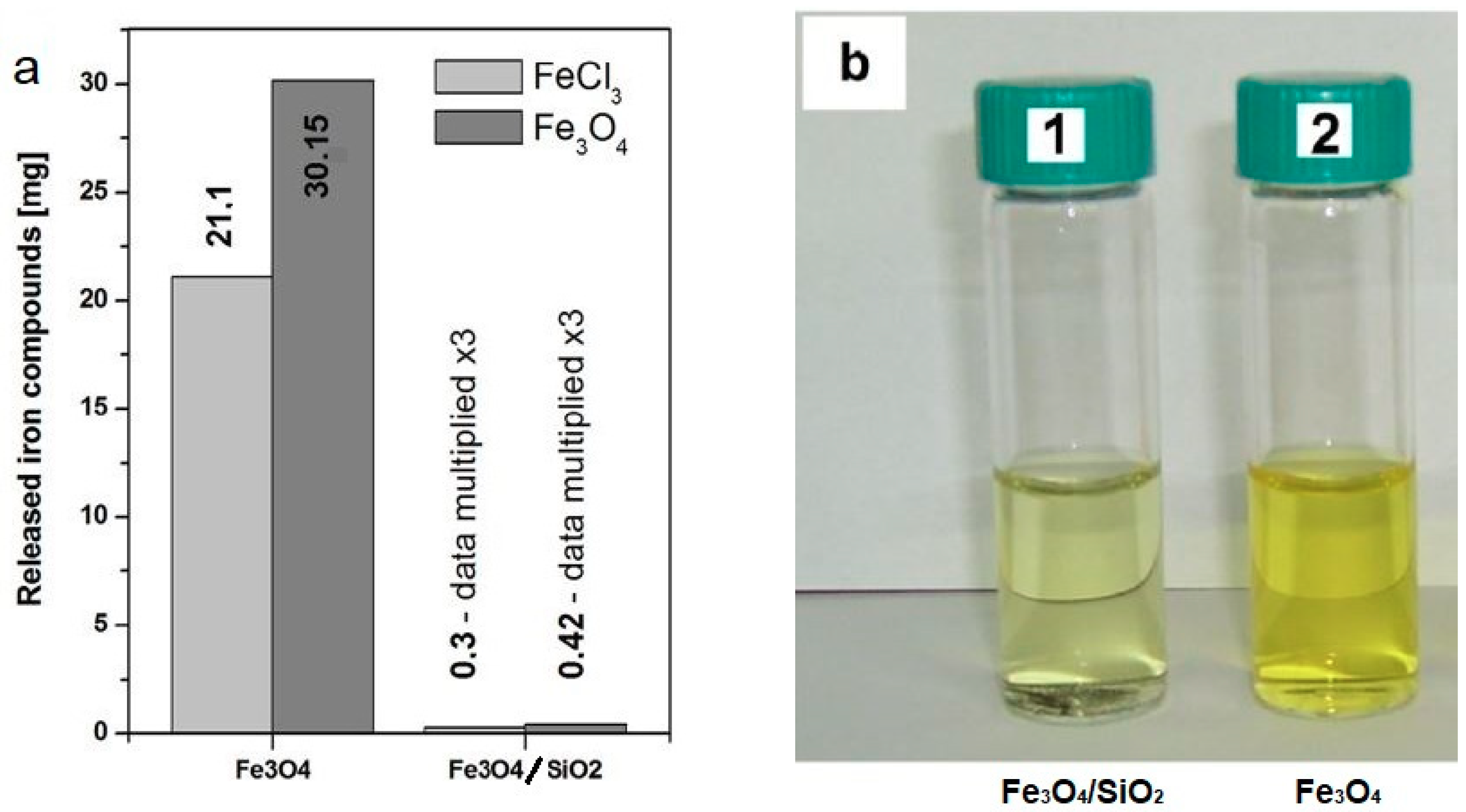

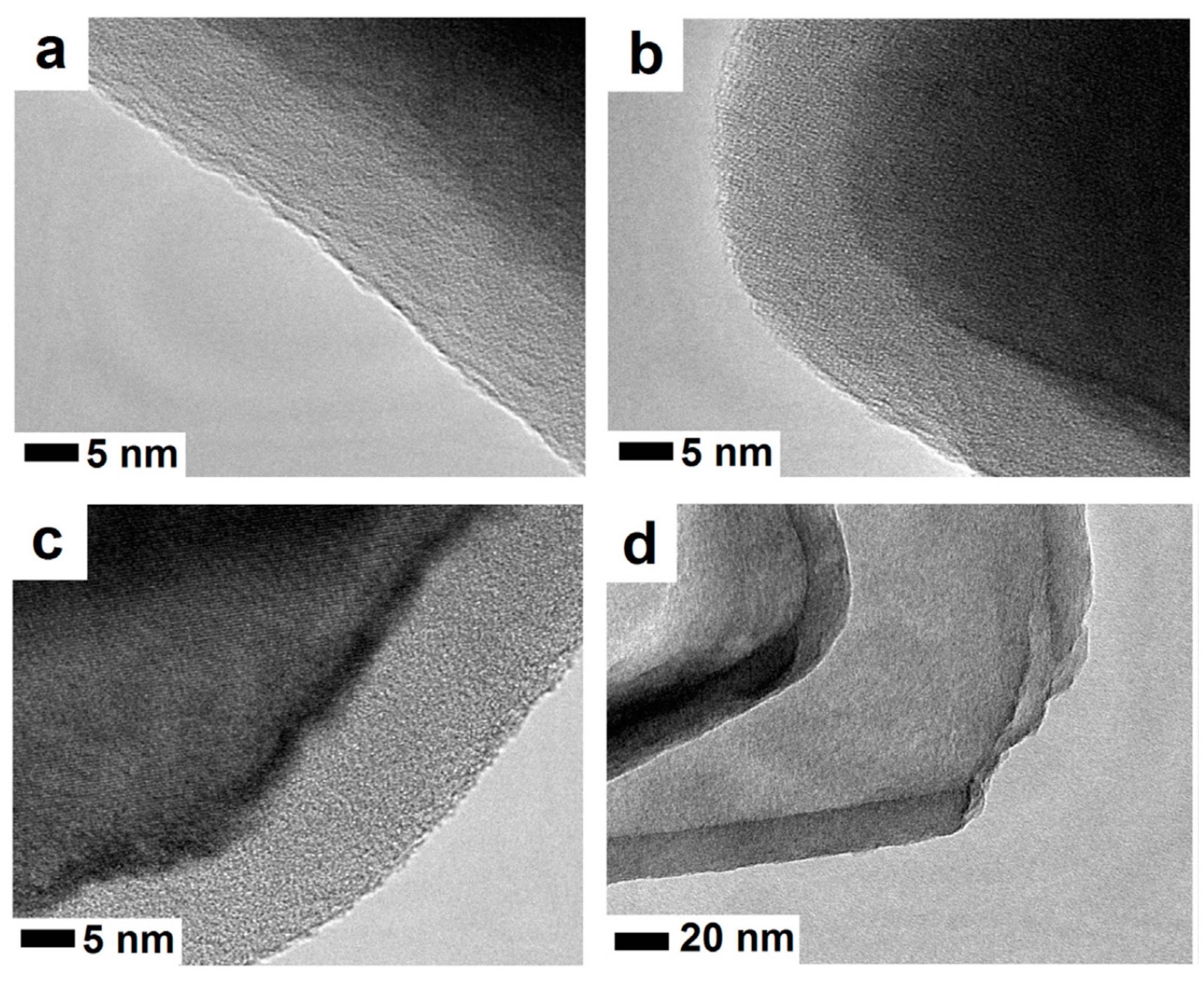
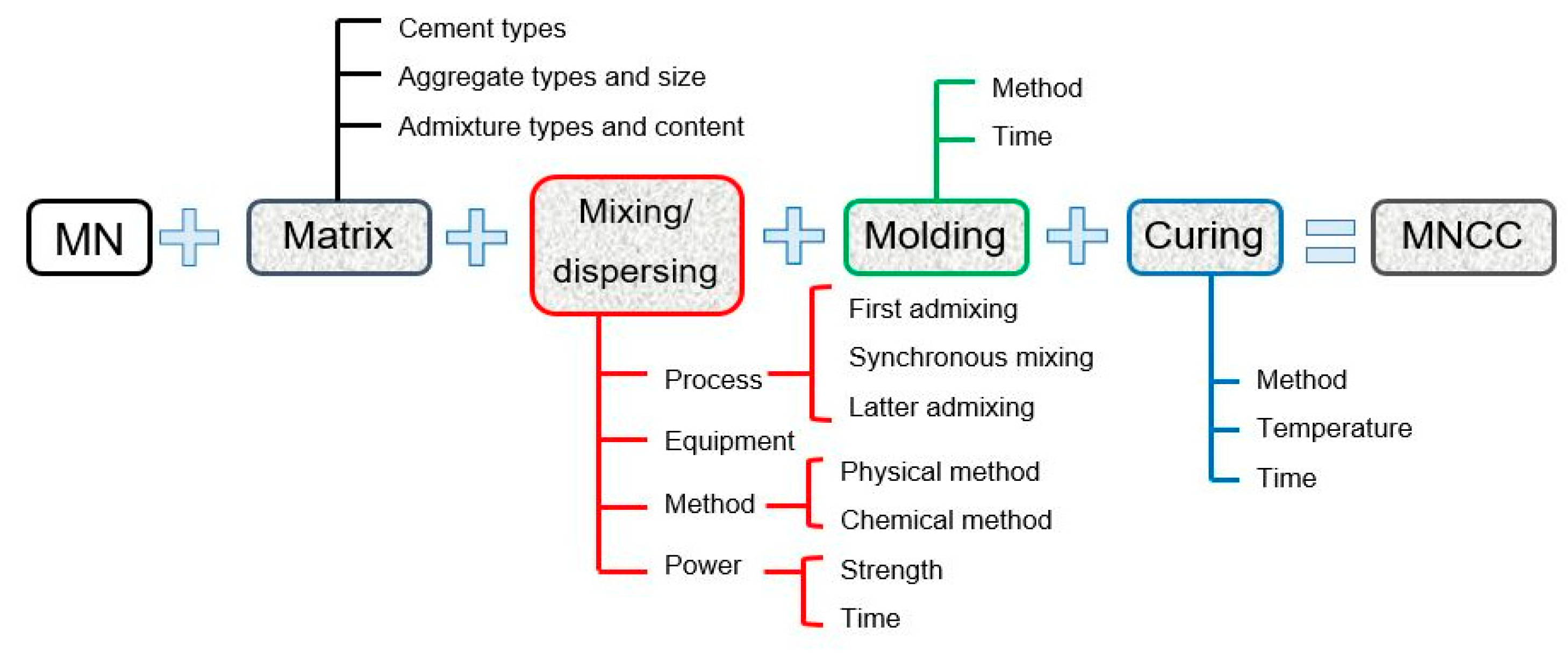
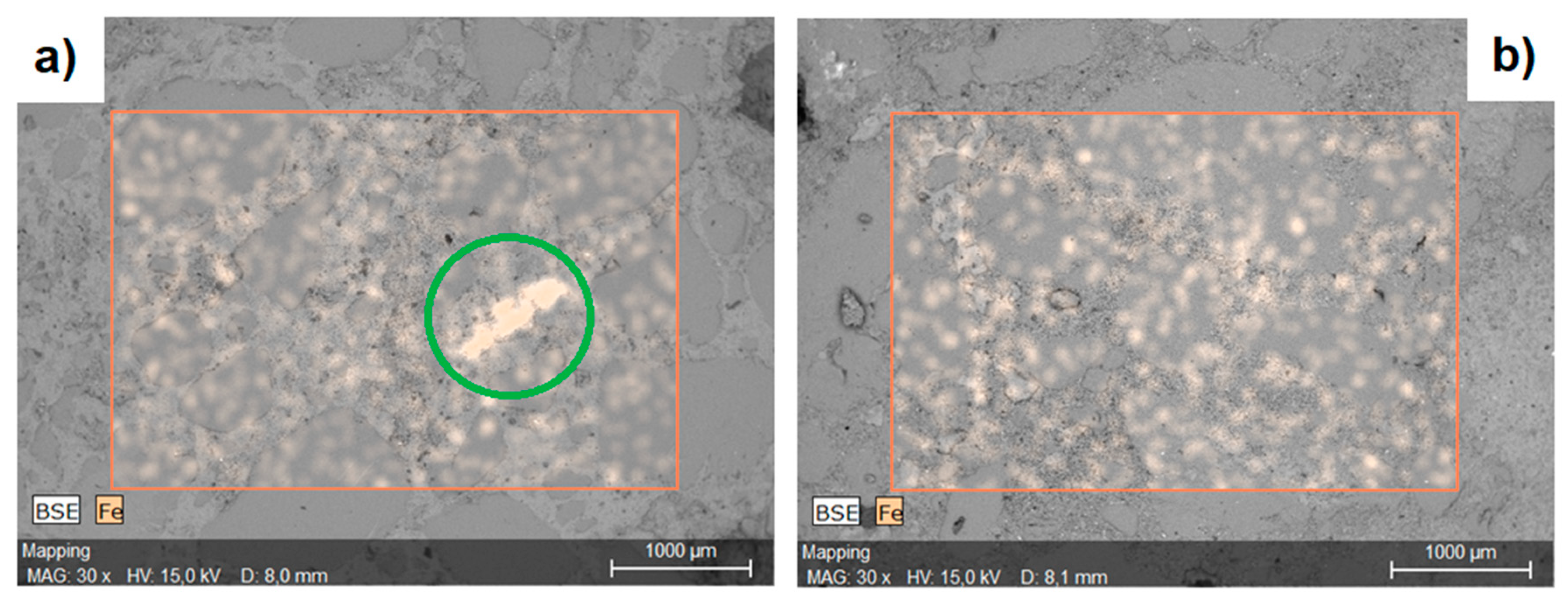
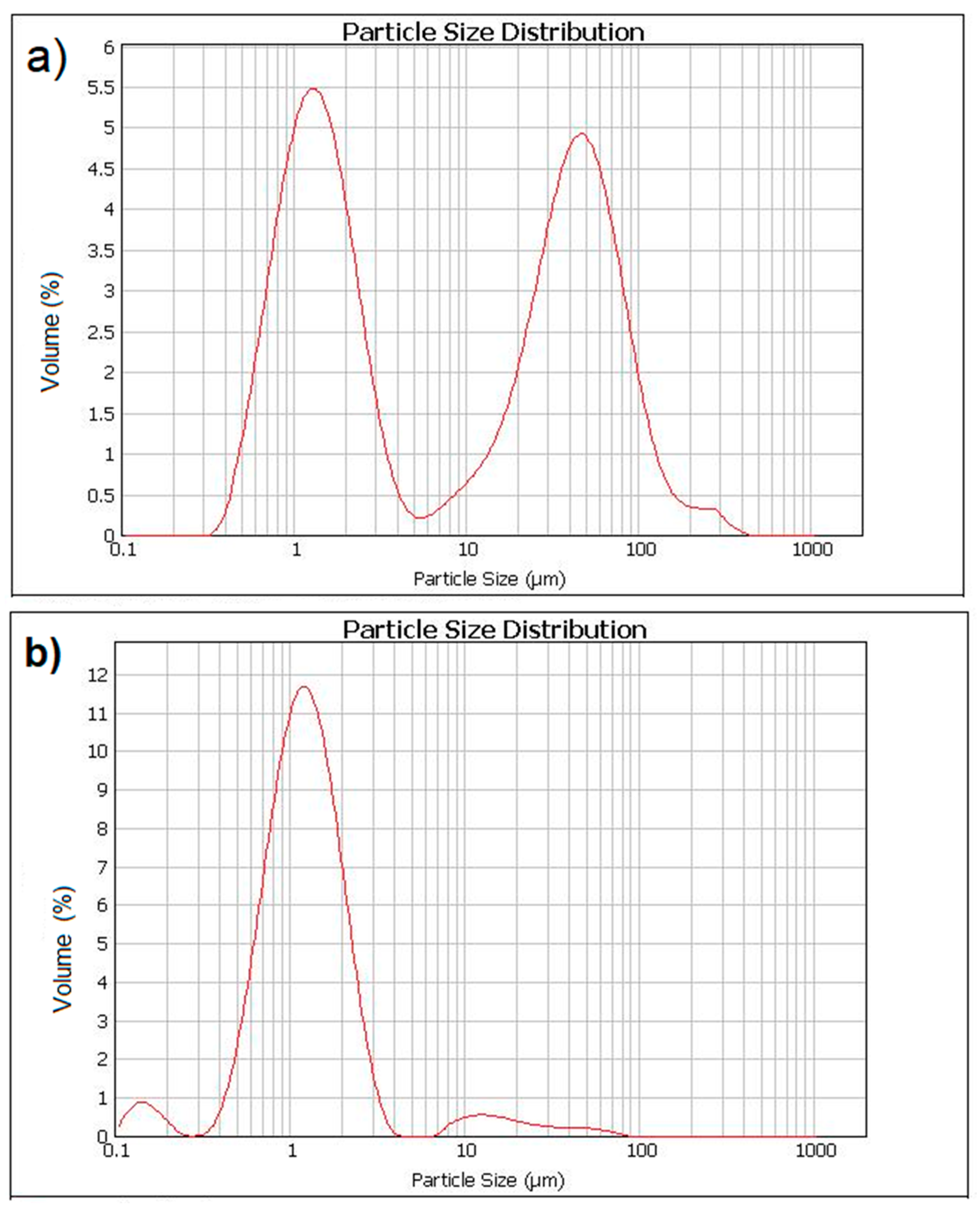


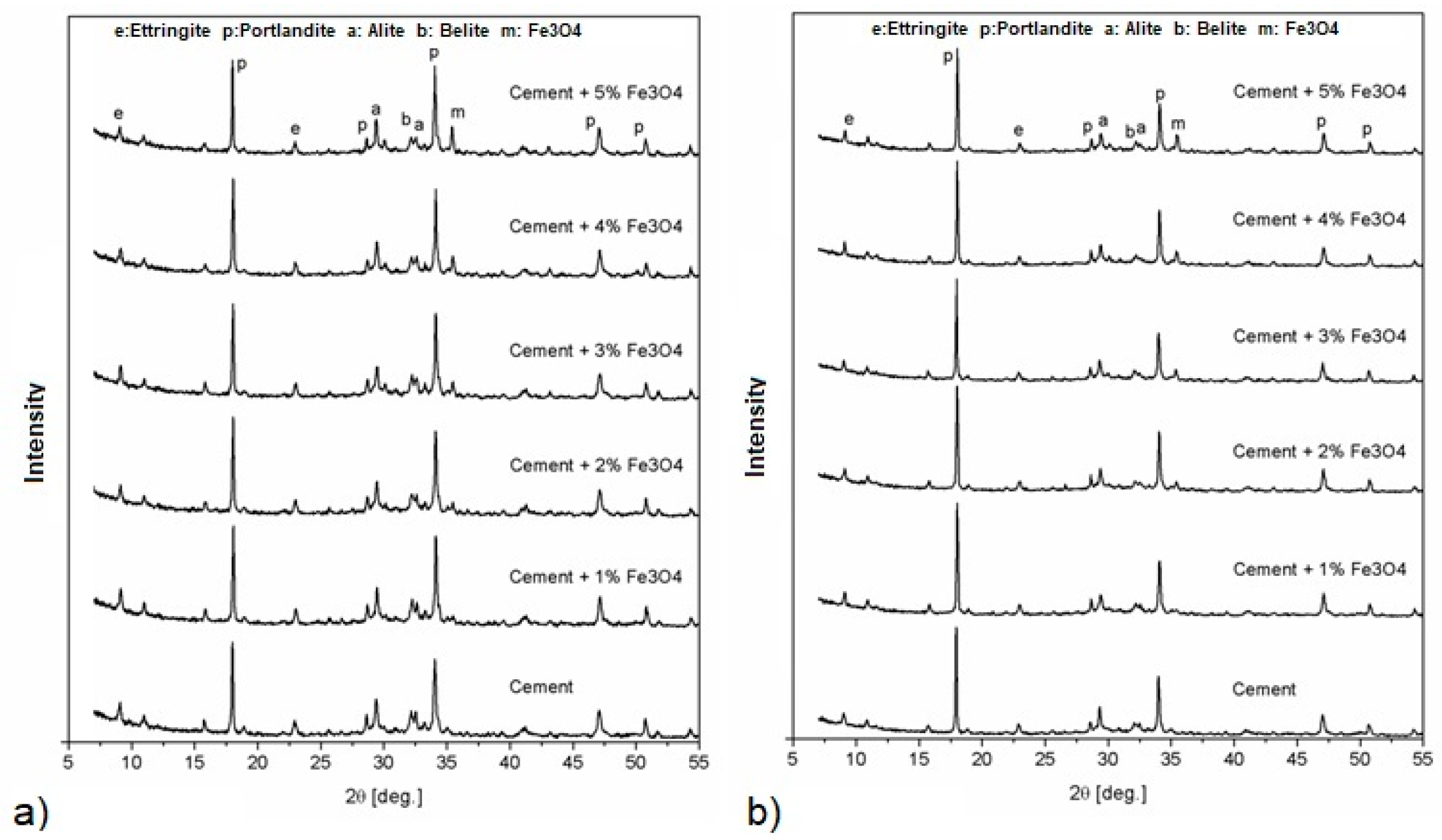

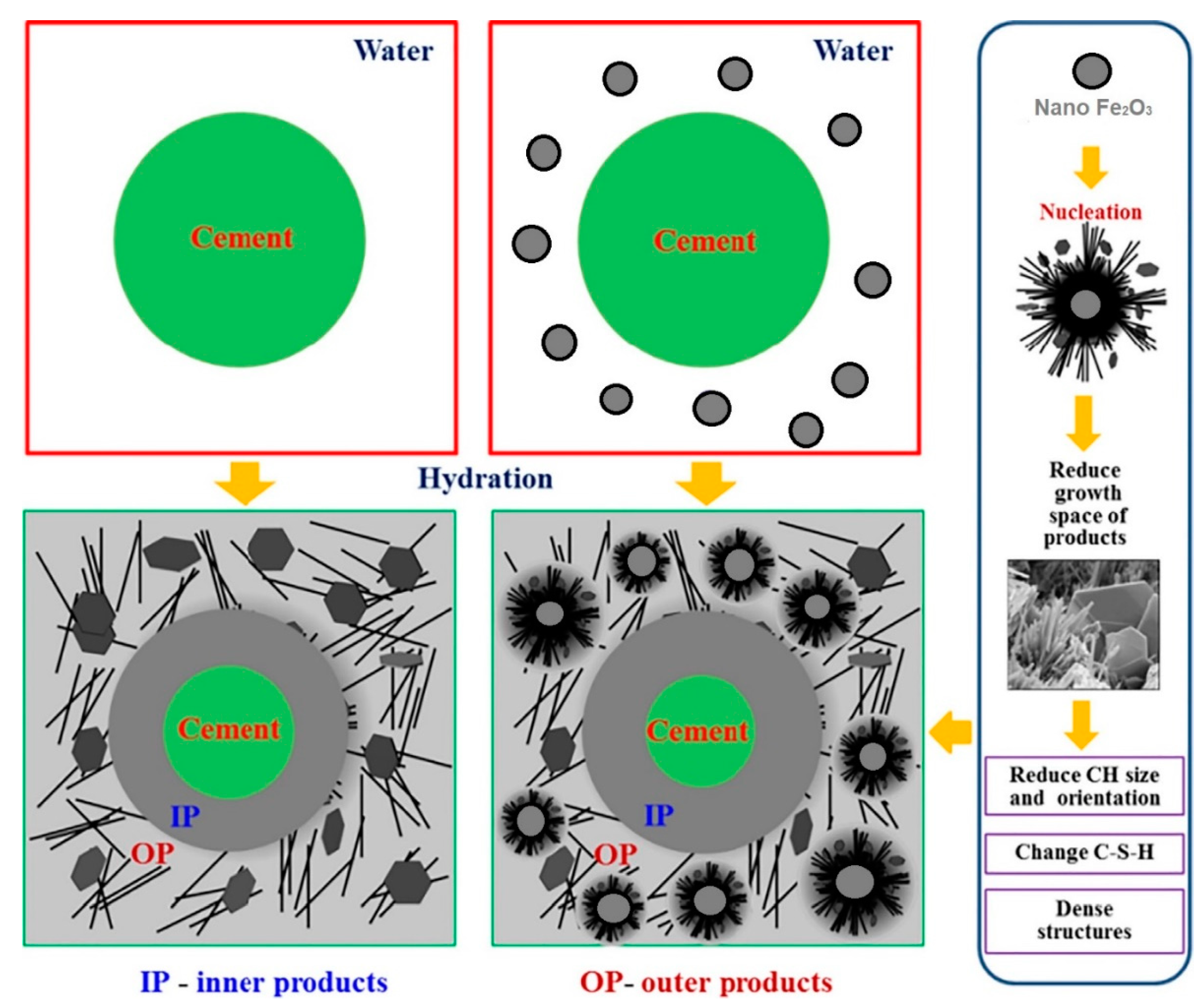
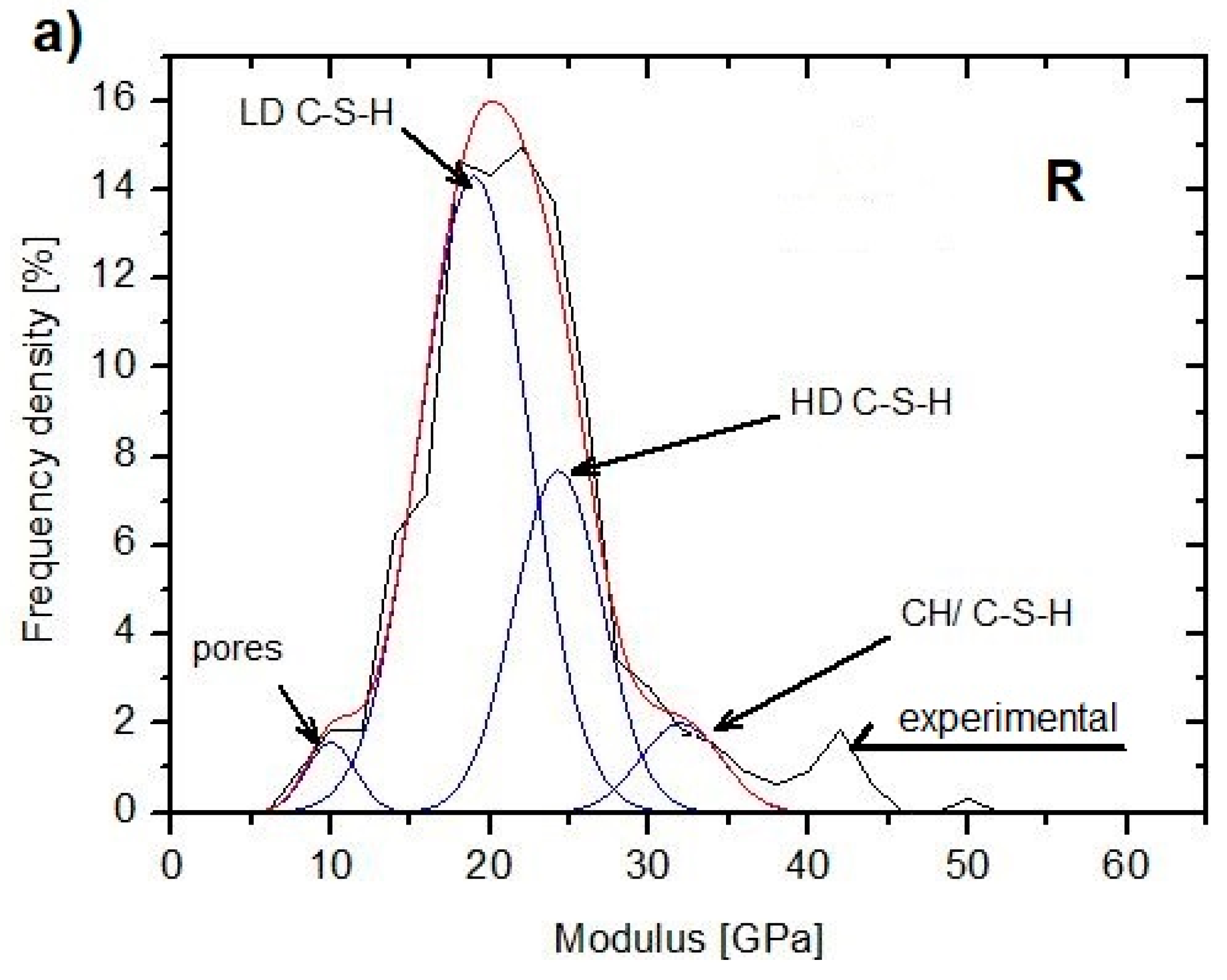
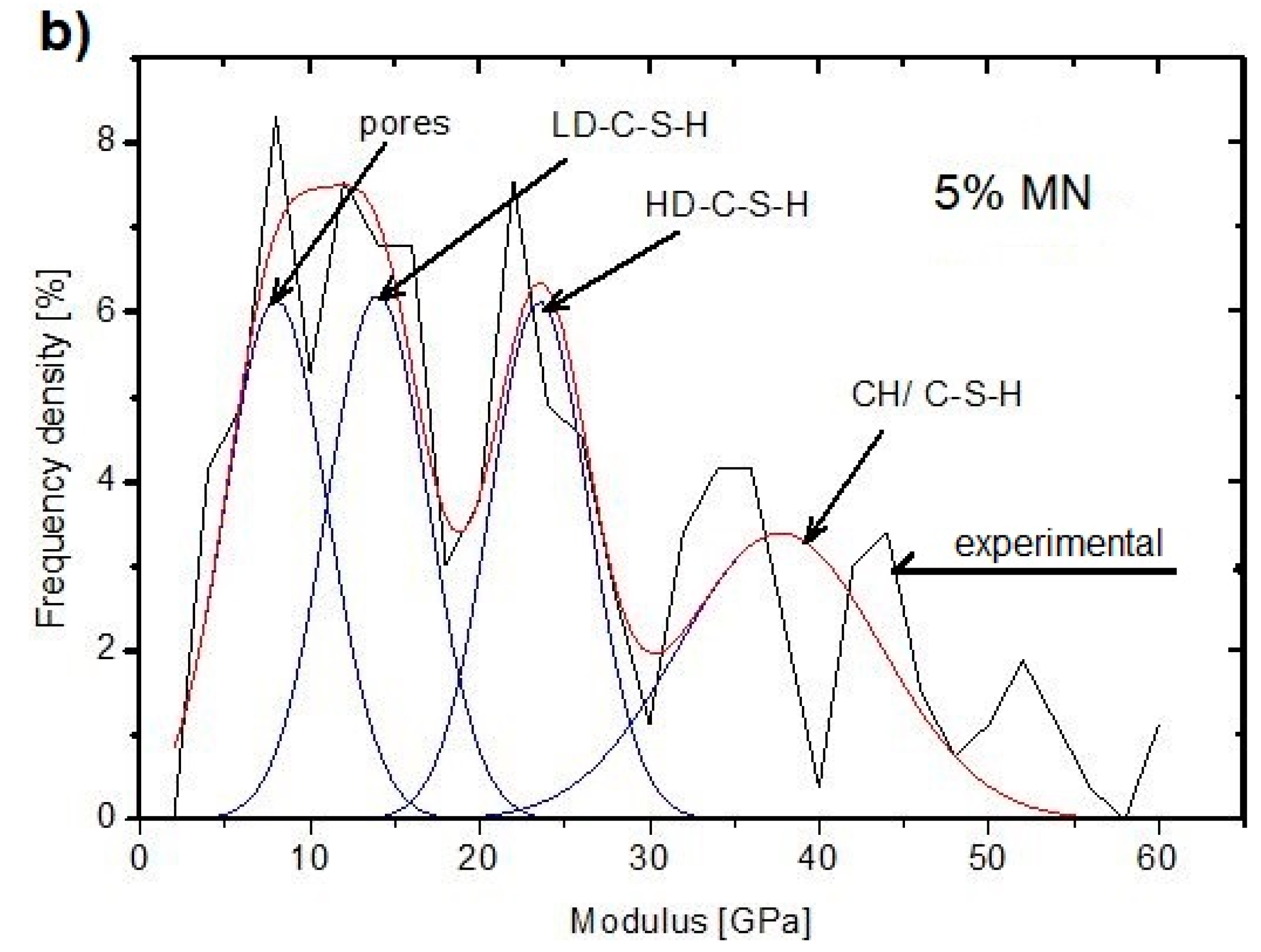
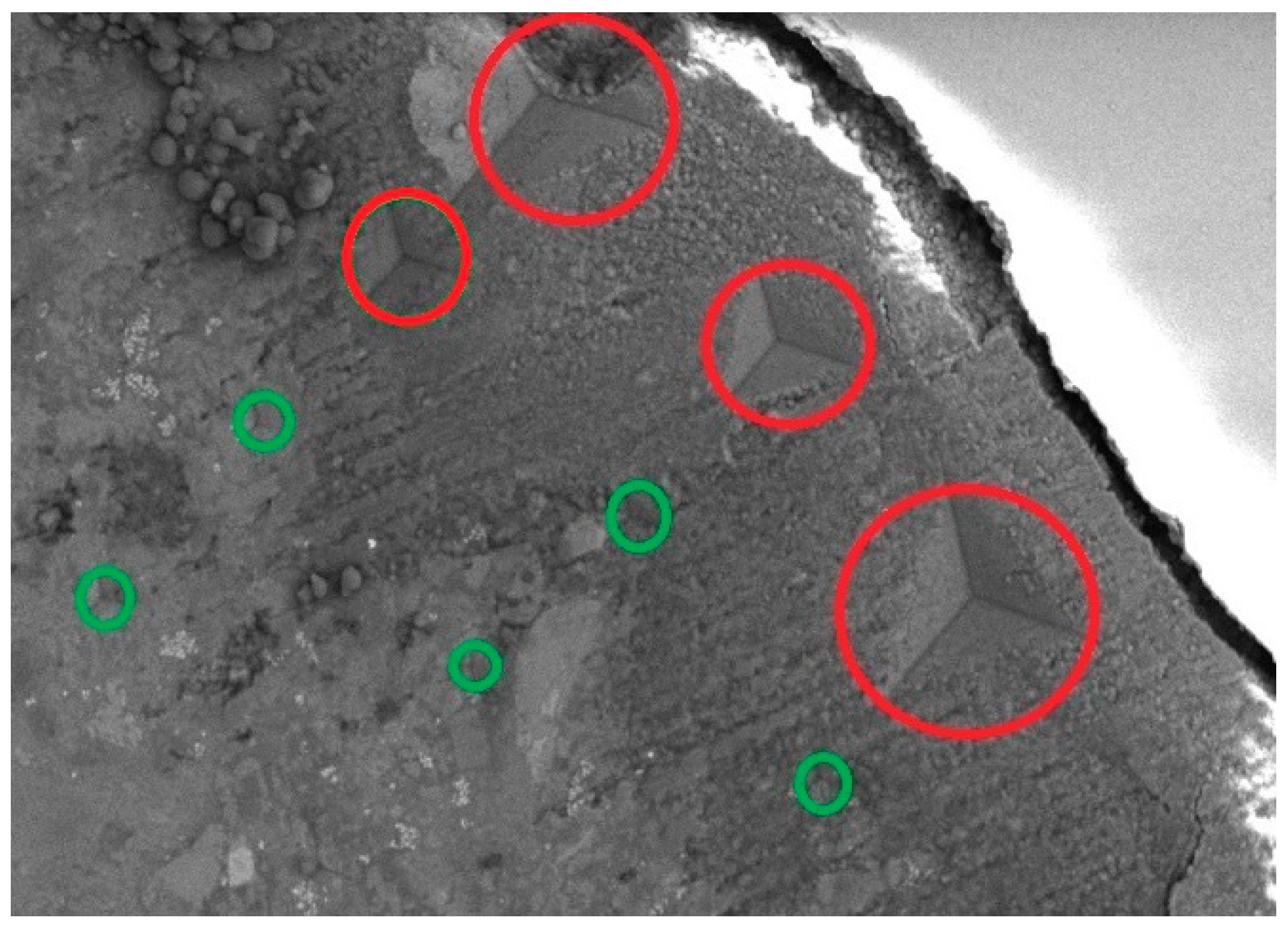
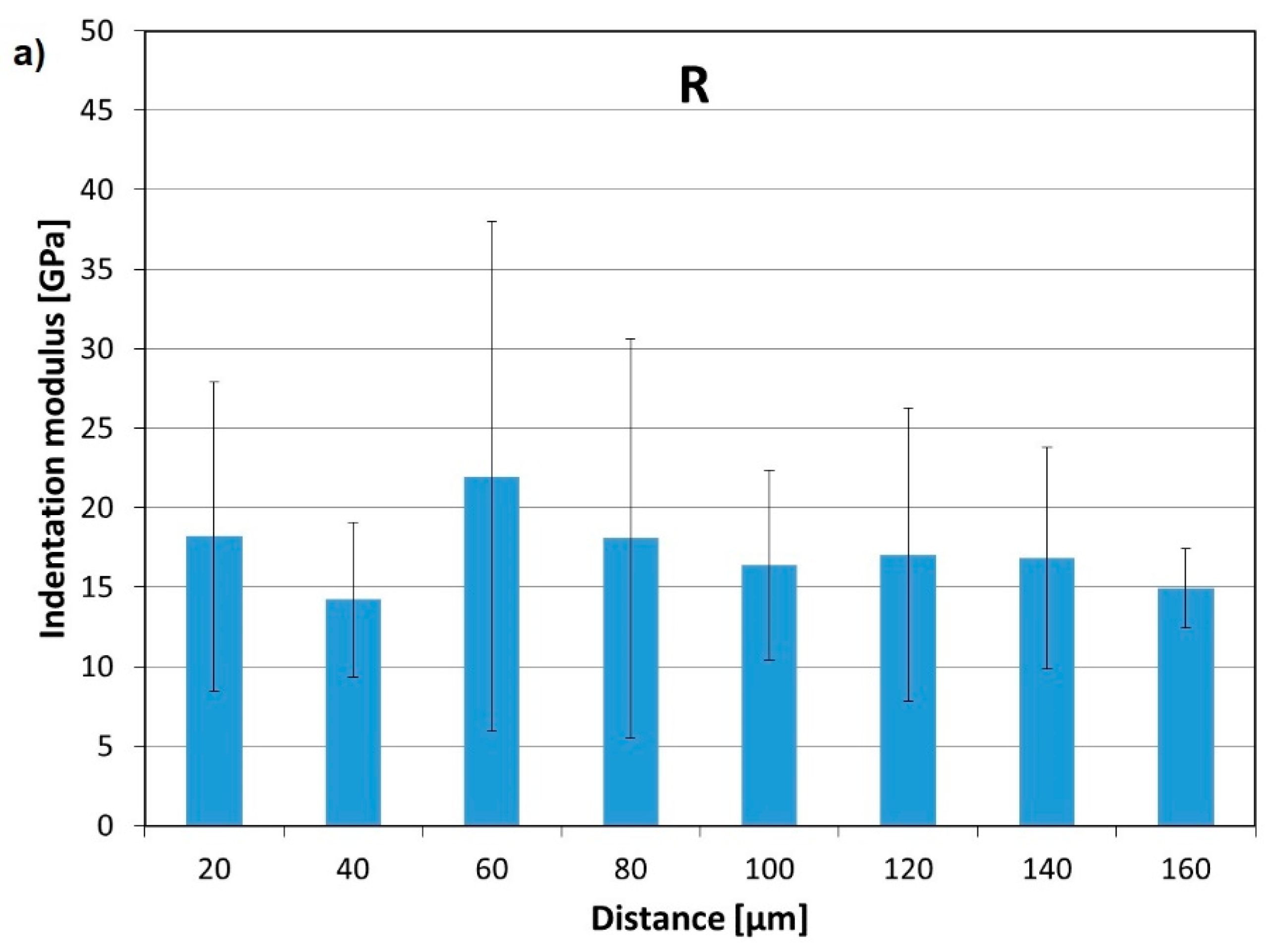
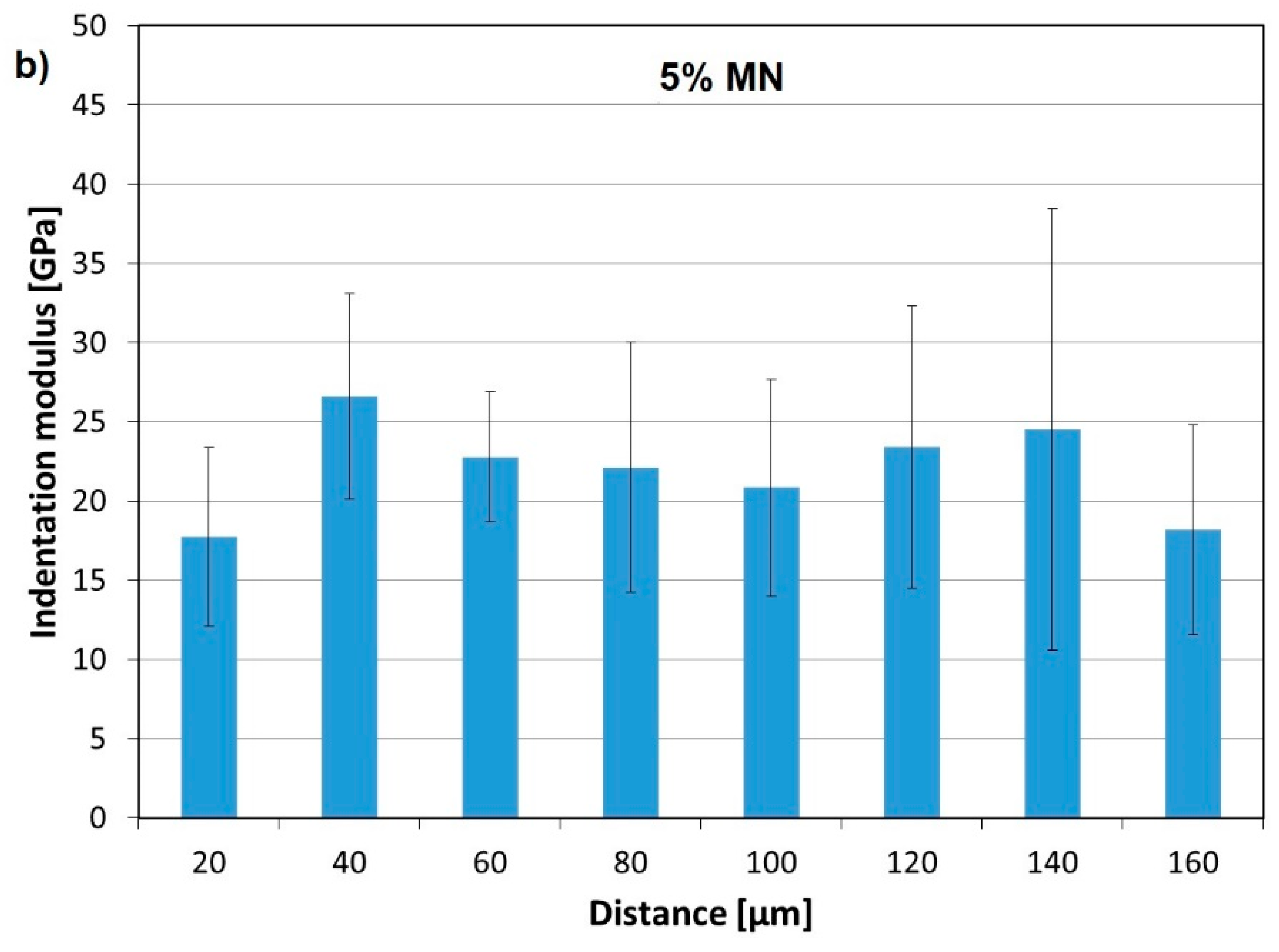


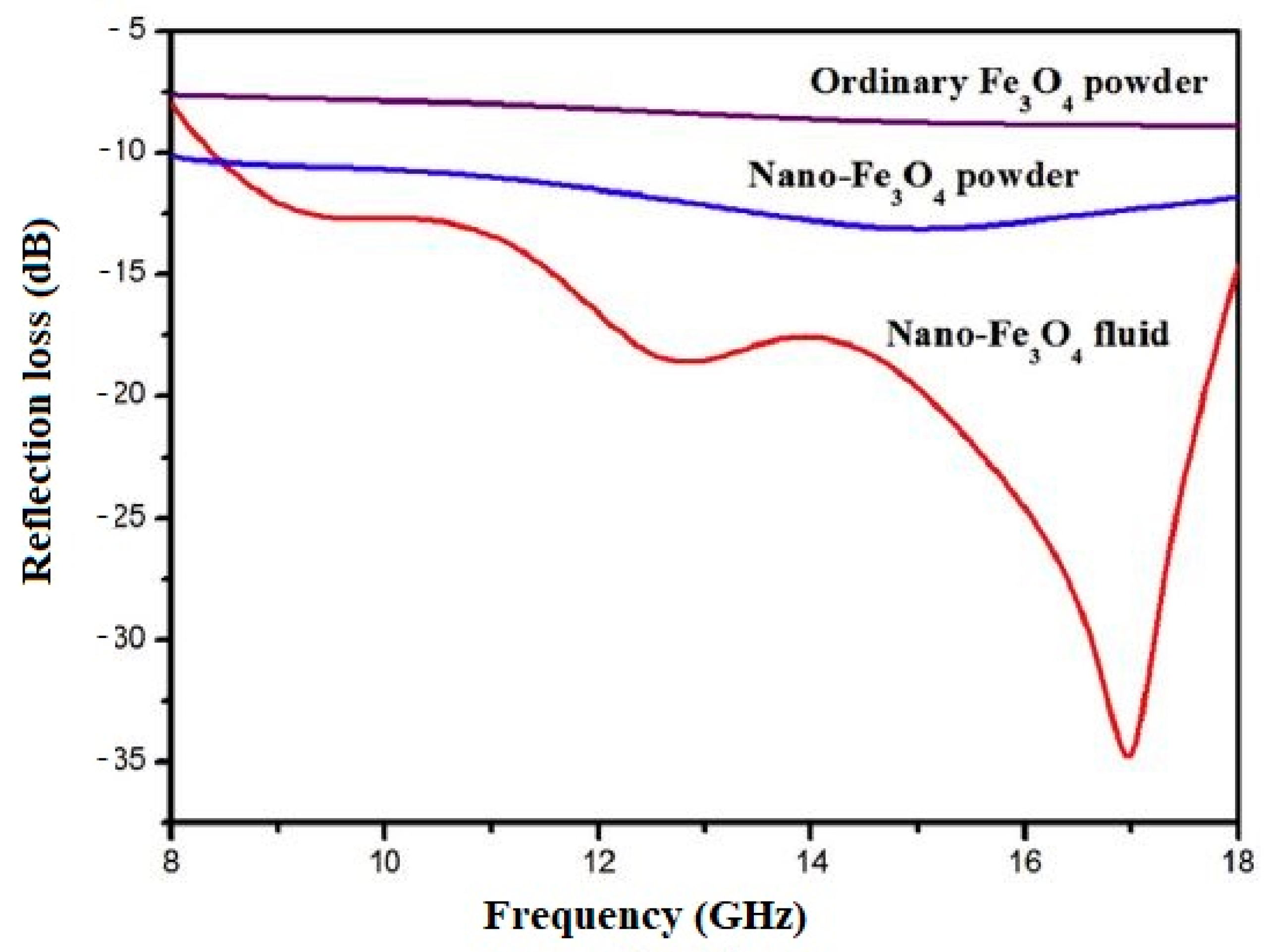


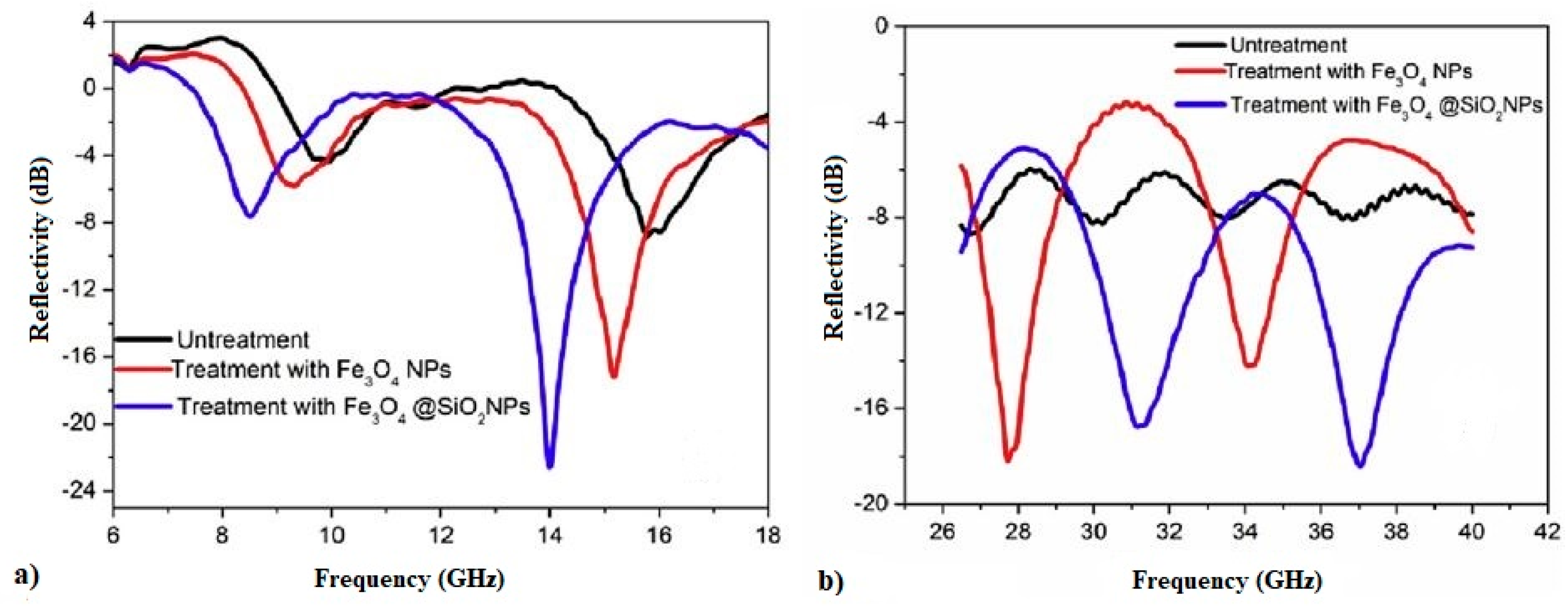
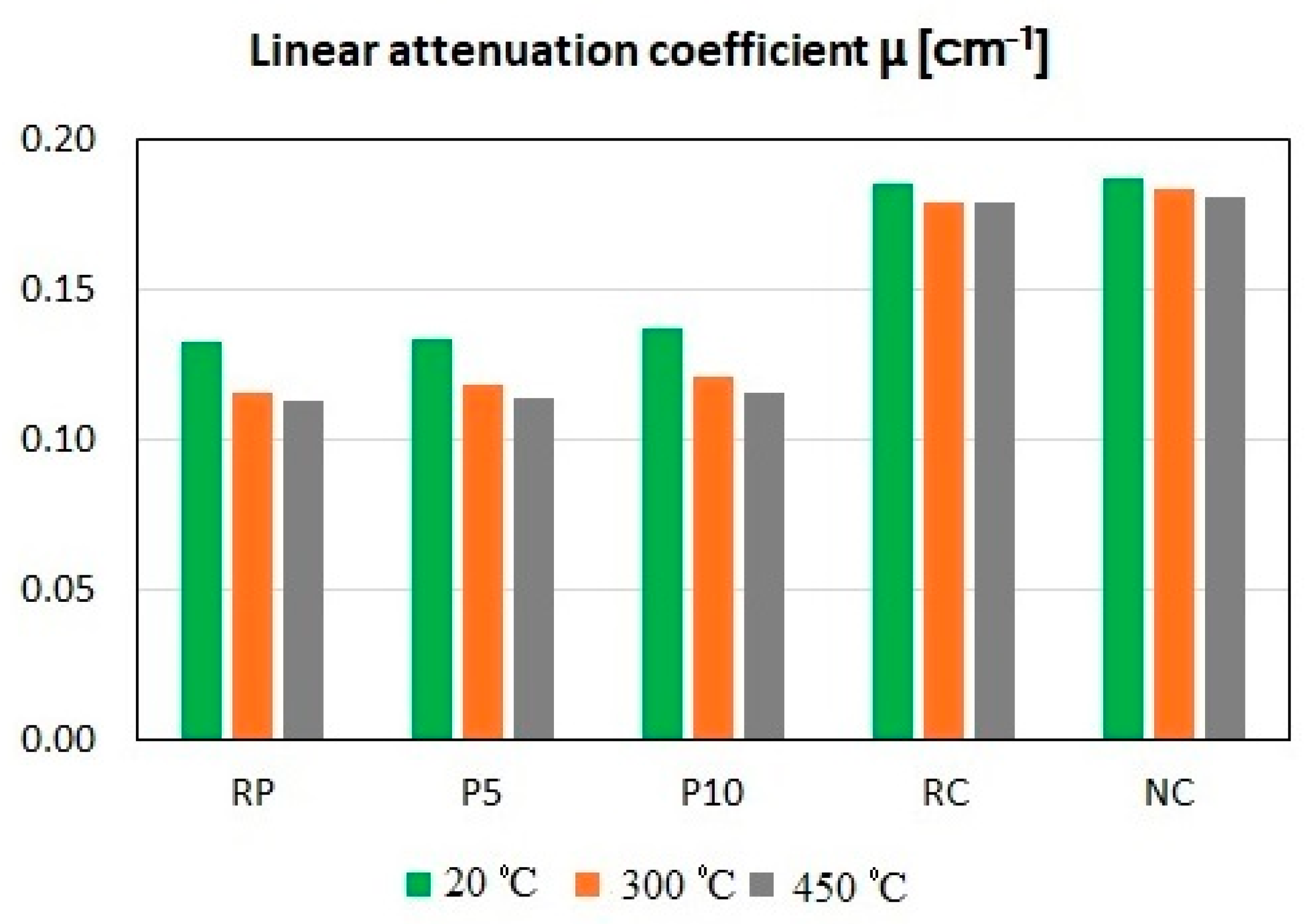



| Synthesis Method | Degree of Complication, Conditions | Reaction Temperature (°C) | Reaction Period | Solvent | Surface-Capping Agents | Size Distribution | Shape Control | Yield |
|---|---|---|---|---|---|---|---|---|
| co-precipitation | very simple, ambient conditions | 20–90 | minutes | water | needed, added during or after reaction | relatively narrow | not good | high/ stable |
| thermal decomposition | complicated, inert atmosphere | 100–320 | hours-days | organic compound | needed, added during reaction | relatively narrow | very good | high/ stable |
| microemulsion | complicated, ambient conditions | 20–50 | hours | organic compound | needed, added during reaction | relatively narrow | good | low |
| hydrothermal synthesis | simple, high pressure | 220 | hours ca. days | water-ethanol | needed, added during reaction | relatively narrow | very good | medium |
| Nano-Particles | MN Dispersion Method | Feeding Order | Mixing Method/Time | Molding | Curing | Reference |
|---|---|---|---|---|---|---|
| Size (mm) | Condition/ Temperature | |||||
| Fe3O4/SiO2 | Shear mixing | W + Sp + NP C + SWN | Stir/3 min Stir/2 min | Vibration/ 50 × 50 × 50 (compressive test) | Lime-saturated water 20 °C | Bolhassani and Sayyahmanesh [56] |
| Fe3O4 | Shear mixing | C + NP W | Stir/30 min Stir/15 min | ___/cylindrical mold: diameter 200, height 300 (compressive test) | _____ | Florez et al. [57] |
| Fe3O4 | Shear mixing | C + NP + M + S + G + W + Sp | _____ | ___/150 × 150 × 150 (compressive test) cylindrical mold: diameter 150, height 300 (indirect tensile test) | Water 20 ± 1 °C. | Shekari and Razzaghi [58] |
| Fe3O4 | Shear mixing | C + NP S + G W + Sp | _____ | __/150 × 150 × 150 (compressive test) __/cylindrical mold: diameter 150, height 300 (indirect tensile test) | Water 20 ± 1 °C. | Jaishankar and Mohan [59] |
| Fe3O4 | Ultrasonic method + Shear mixing | W + NP + Sp C + S SWN | Stir + ultrasonic/1 min Stir/1 min Stir/2 min | Vibration/ 40 × 40 × 160 (flexural and compressive test) | Water 20 ± 2 °C. | Sikora et al. [40] |
| Fe3O4Fe3O4/SiO2 | Ultrasonic method + Shear mixing | W + NP + Sp C + S SWN | Stir + ultrasonic/30 min Stir/1 min Stir/2 min | Vibration/ 40 × 40 × 160 (flexural and compressive test) | Water 20 ± 2 °C | Sikora et al. [55] |
| Matrix Type/ Type of Nanoparticle | Enhancement | Content of MN (wt %) | References | |||||
|---|---|---|---|---|---|---|---|---|
| After 3 Days | After 7 Days | After 28 Days | ||||||
| Abs. (MPa) | Rel. (%) | Abs. (MPa) | Rel. (%) | Abs. (MPa) | Rel. (%) | |||
| paste/ Fe3O4 | 43 | 0.00 | 55 | 3.77 | 74 | 4.22 | 0.05 | Bolhassani and Sayyahmanesh [56] |
| 45 | 4.65 | 57 | 7.54 | 85 | 15.71 | 0.10 | ||
| 48 | 11.62 | 66 | 24.52 | 67 | −5.63 | 0.20 | ||
| paste/ Fe3O4/SiO2 | 43 | 0.00 | 53 | 0.00 | 73 | 2.81 | 0.05 | |
| 43 | 0.00 | 56 | 5.66 | 78 | 9.85 | 0.10 | ||
| 45 | 4.65 | 60 | 13.20 | 81 | 14.08 | 0.20 | ||
| paste/ Fe3O4 | _____ | _____ | _____ | _____ | 60 | 50.00 | 10.0 | Flores et al. [57] |
| paste/ Fe3O4 | _____ _____ | 35.80 24.50 | _____ _____ | 15.00 7.30 | ____ ____ | ____ ____ | 5.0 (fluid) 5.0 (powder) | He et al. [94] |
| mortar/ Fe3O4 | _____ | _____ | _____ | _____ | 62.8 | 20.07 | 3.0 | Sikora et al. [55] |
| _____ | _____ | _____ | _____ | 54.3 | 4.59 | 5.0 | ||
| mortar/ Fe3O4/SiO2 | _____ | _____ | _____ | _____ | 51.5 | −1.53 | 3.0 | |
| _____ | _____ | _____ | _____ | 55.5 | 6.12 | 5.0 | ||
| concrete/ Fe3O4 | _____ | _____ | _____ | _____ | 119 | 28.93 | 1.5 | Shikari and Razzaghi [58] |
| concrete/ Fe3O4 | _____ | _____ | _____ | _____ | 64 | 4.92 | 1.5 | Jaishankar and Mohan [59] |
| concrete/ Fe3O4 | _____ | _____ | 28.0 | 19.15 | 36.4 | 6.43 | 1.0 | Bragança et al. [95] |
| Symbol of Specimen | MN Content (wt %) | µ (cm−1) | HVL (cm) | TVL (cm) | ||||||
|---|---|---|---|---|---|---|---|---|---|---|
| Temperature (°C) | ||||||||||
| 20 | 300 | 450 | 20 | 300 | 450 | 20 | 300 | 450 | ||
| RP | 0 | 0.133 | 0.116 | 0.113 | 5.21 | 5.98 | 6.13 | 17.31 | 19.85 | 20.38 |
| P5 | 5 | 0.134 | 0.118 | 0.114 | 5.17 | 5.87 | 6.08 | 17.18 | 19.51 | 20.20 |
| P10 | 10 | 0.137 | 0.121 | 0.116 | 5.06 | 5.73 | 5.97 | 16.80 | 19.03 | 19.85 |
| RC | 0 | 0.186 | 0.179 | 0.179 | 3.73 | 3.85 | 3.87 | 12.38 | 12.79 | 12.86 |
| NC | 3 | 0.187 | 0.184 | 0.181 | 3.71 | 3.78 | 3.82 | 12.31 | 12.54 | 12.69 |
© 2019 by the author. Licensee MDPI, Basel, Switzerland. This article is an open access article distributed under the terms and conditions of the Creative Commons Attribution (CC BY) license (http://creativecommons.org/licenses/by/4.0/).
Share and Cite
Horszczaruk, E. Properties of Cement-Based Composites Modified with Magnetite Nanoparticles: A Review. Materials 2019, 12, 326. https://doi.org/10.3390/ma12020326
Horszczaruk E. Properties of Cement-Based Composites Modified with Magnetite Nanoparticles: A Review. Materials. 2019; 12(2):326. https://doi.org/10.3390/ma12020326
Chicago/Turabian StyleHorszczaruk, Elżbieta. 2019. "Properties of Cement-Based Composites Modified with Magnetite Nanoparticles: A Review" Materials 12, no. 2: 326. https://doi.org/10.3390/ma12020326




